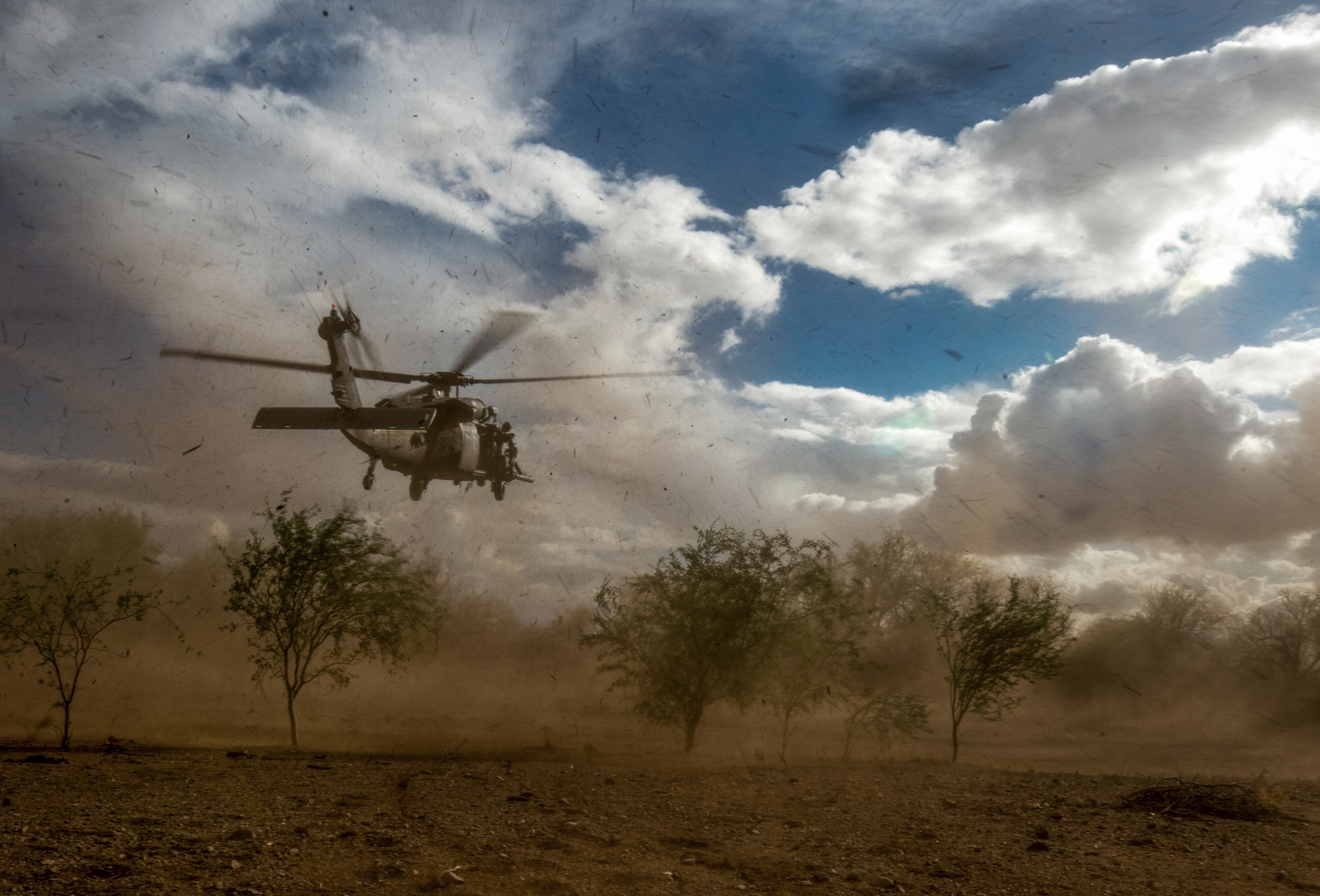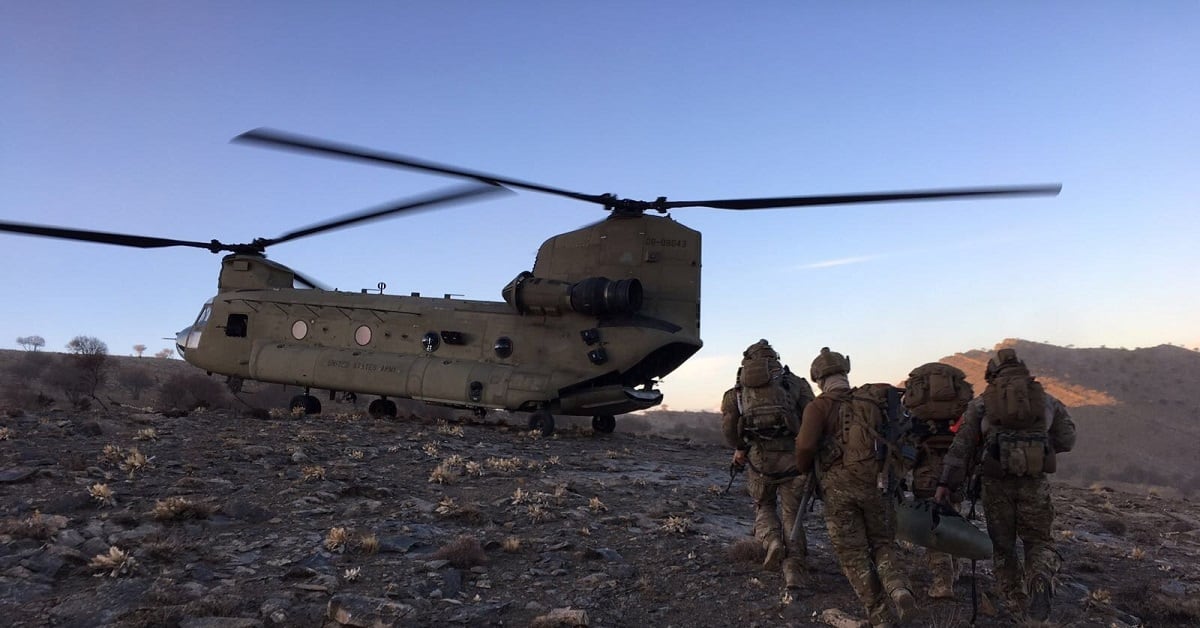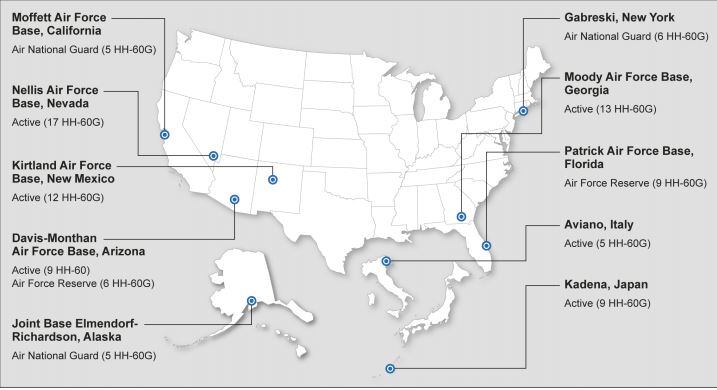The Air Force’s HH-60G Pave Hawks — the Defense Department’s premier combat rescue helicopter — have aged beyond their expected service life and are in need of replacement.
The fleet, first fielded in the 1980s, was originally 112 strong. But as the herd thinned out due to maintenance issues and mishaps, the Air Force built a plan to rebuild the rescue squadrons in two ways, according to a new report from the Government Accountability Office.
First, the Air Force procured 21 Army UH-60L helicopters. Those aircraft will be converted to the HH-60G Pave Hawk configuration under the Air Force’s Operational Loss Replacement program. Second, the Air Force is purchasing 112 new combat recovery helicopters, dubbed HH-60Ws, to fully replace its fleet of HH-60Gs by 2029, with the first replacements arriving in 2020.
The changes are needed because the Pave Hawks are currently cruising along on their final legs. Only 68 percent of the 96-helicopter fleet were mission-capable in fiscal 2017, well below the Air Force’s desired mission-capable rate of 75 percent, according to the GAO report.
“Currently, available helicopters across the fleet average about 7,100 flight hours,” the report reads. That’s “about 18 percent more than their initial expected service life of 6,000 hours.”
Naturally, the overworked aircraft are experiencing maintenance challenges as airmen try to keep the fleet ready to fly domestic and international rescue missions.
“For example, the helicopters undergoing depot-level maintenance spent an average of 332 days undergoing such maintenance in fiscal year 2017, compared with 233 days in fiscal year 2007, more than a 40-percent increase,” the report reads. “Air Force officials attribute these challenges to the helicopters exceeding their initially planned service life.”

Pave Hawk crews often deploy in support of DoD personnel recovery missions and other operations around the world. In recent years, the military has relied on these units to support medical evacuations in Iraq and Afghanistan.
Other military services fly similar helicopters, such as the Army’s UH-60L, but the HH-60G’s on-board characteristics are unique.
The Pave Hawk is outfitted with an extensive communications suite, the ability to conduct in-flight refueling and the gear needed to operate at high altitudes — helpful for the rugged mountain peaks of Afghanistan.
The HH-60G aircrew consists of two pilots and two special mission aviators — airmen trained as both flight engineers and gunners for the helicopter’s two 50-caliber machine guns.
RELATED

Active-duty rescue squadrons are scheduled to begin receiving new helicopters in 2020, six years before the reserve component, according to the report. This is because the active component has the higher number of flight hours and is in the most need.
In May 2018, the Air Force’s active-duty HH-60Gs averaged about 2,000 more flight hours per helicopter than the reserve component.
Air Force Reserve squadrons will receive most of their new helicopters between 2026 and 2028.
After the reserve units, the Air National Guard will begin receiving new helicopters in 2028 — three years after the formal training units will have stopped training students on the legacy HH-60Gs.
In the meantime, Guard units will receive refurbished Army helicopters starting in 2019, according to Air Force officials cited in the report. These helicopters will have 3,000 or fewer flight hours and will be upgraded to the Air Force’s HH-60G configuration.

The Army helicopters will bridge the gap until the Air National Guard receives the new combat rescue helicopters. However, due to the Air Force’s fielding schedule, the service may face a challenge in supporting formal training for its reserve component squadrons from 2025 through 2028.
Of the Air Force’s 96 HH-60G Pave Hawks, 82 are designated to meet its personnel recovery mission requirements. The remaining 14 helicopters are designated for training and development testing.
The rescue squadrons at Kirtland and Nellis Air Force bases conduct all formal HH-60G training. By 2025, those bases are scheduled to transition to providing formal training for the new combat rescue helicopters.
“However, other squadrons will continue to fly the HH-60G aircraft after fiscal year 2025,” the GAO report reads. “Seven rescue squadrons will fly the legacy HH-60Gs in fiscal year 2025, and some will continue flying the HH-60Gs until fiscal year 2028 and so will continue to need formal training to fly that helicopter throughout that period.”
In order to address that training gap, Air Force officials said they would provide legacy HH-60G helicopters, for a limited time, to the Air National Guard squadron at Kirtland. This will allow the Air National Guard to continue providing initial and re-qualification training on the older aircraft for several years after the active component stops using them.
Kyle Rempfer was an editor and reporter who has covered combat operations, criminal cases, foreign military assistance and training accidents. Before entering journalism, Kyle served in U.S. Air Force Special Tactics and deployed in 2014 to Paktika Province, Afghanistan, and Baghdad, Iraq.





